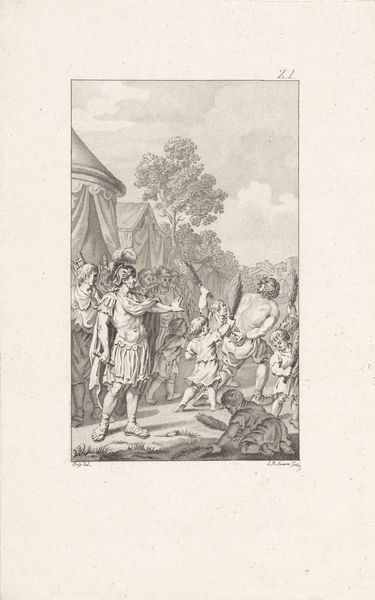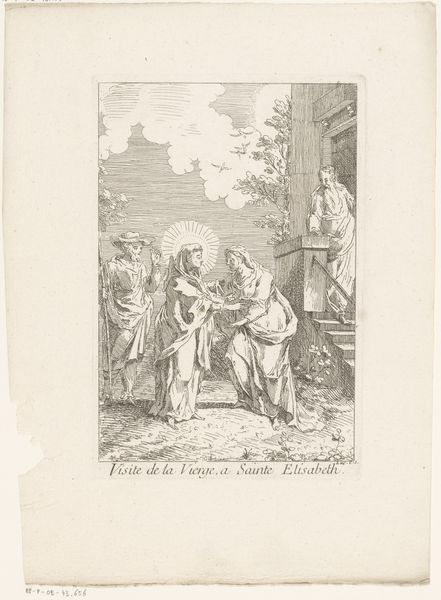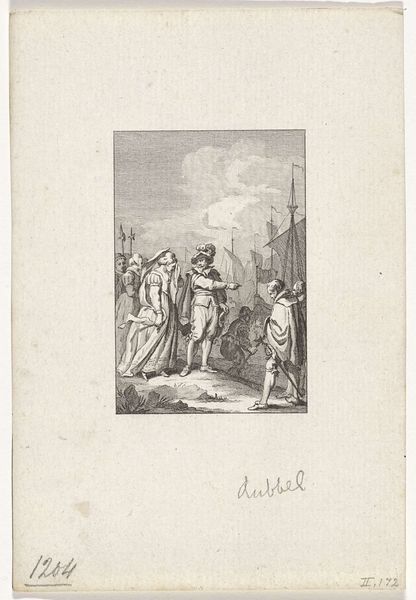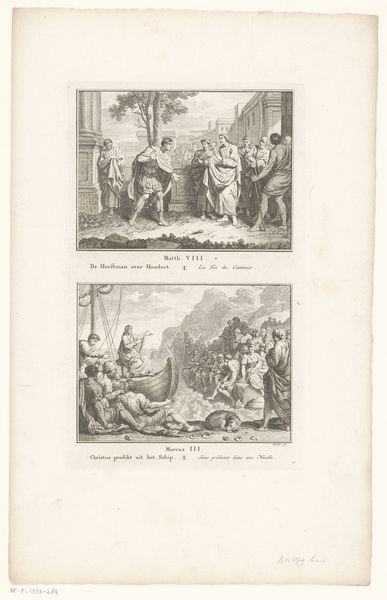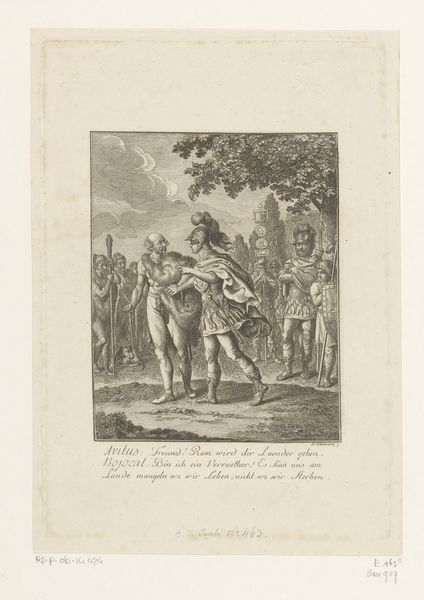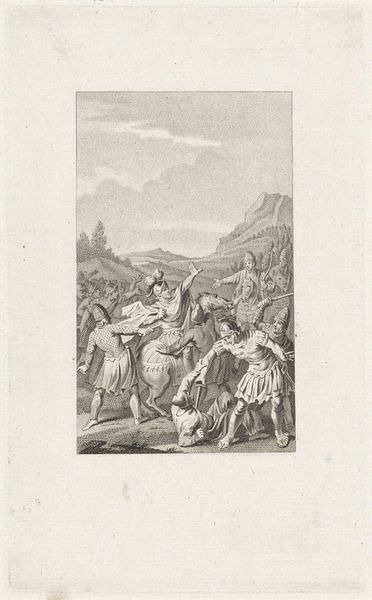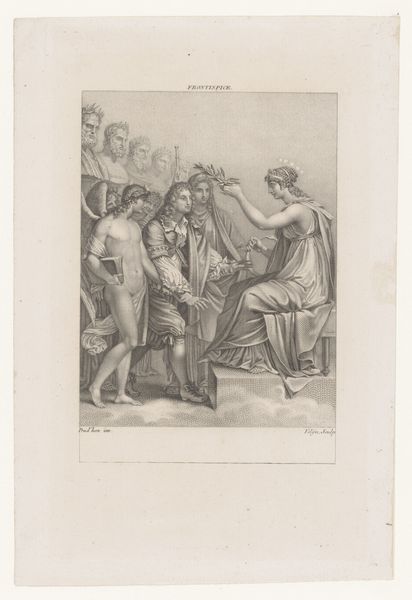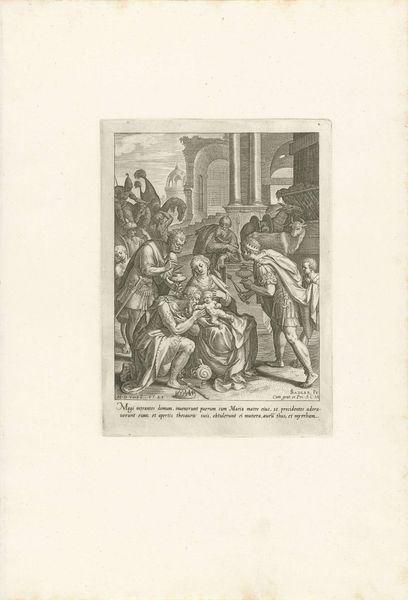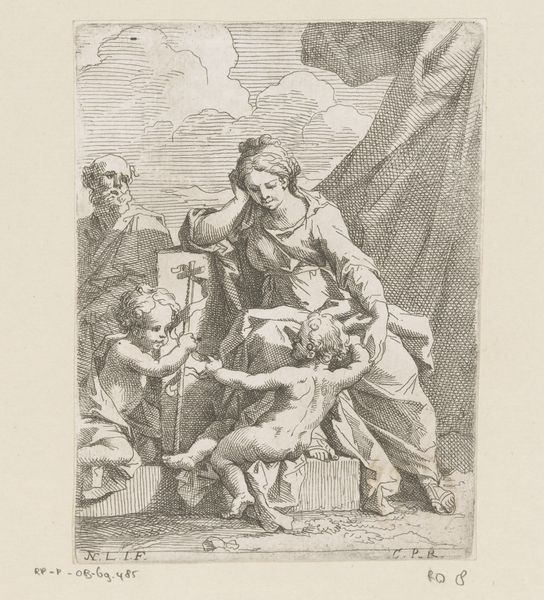
engraving
#
neoclacissism
#
figuration
#
line
#
history-painting
#
engraving
#
monochrome
Dimensions: height 235 mm, width 155 mm
Copyright: Rijks Museum: Open Domain
Editor: This engraving by Reinier Vinkeles from 1797, titled "Meeting of David and Abigail," is fascinating. It’s a very formal depiction, almost theatrical in its staging. I'm struck by the clear linear style, and all the gifts being offered. What catches your eye when you look at it? Curator: I'm drawn to the engraving process itself. Think about the labor involved in creating such intricate lines by hand. Each mark signifies hours of work, carefully transferring an image and narrative to a metal plate to facilitate its mechanical reproduction, and hence its dispersal throughout society. It transforms the biblical narrative into a commodity available for purchase. How do you see this medium shaping the story being told? Editor: I hadn’t considered it that way. The precision lends the scene a sense of order and control, even though it depicts a plea for mercy. Is the choice of monochrome significant too? Curator: Absolutely. Monochrome underscores the work’s function as a replicable image, made accessible for educational or devotional purposes within a certain economic class. What does the restriction of color mean to how we should approach the symbolism in the scene, if it becomes simply the rendering of textures and values? Editor: Interesting point! I guess it pulls the focus to the underlying narrative and the relationship between the figures, stripped of any decorative distraction. Perhaps this emphasis aimed to align with certain reformist religious views emerging at the time. Curator: Precisely. So much can be gleaned from studying artmaking itself, and what these processes meant in 1797! Editor: I’m definitely viewing it differently now. I am beginning to wonder about its purpose in society at the time. Thank you!
Comments
No comments
Be the first to comment and join the conversation on the ultimate creative platform.
